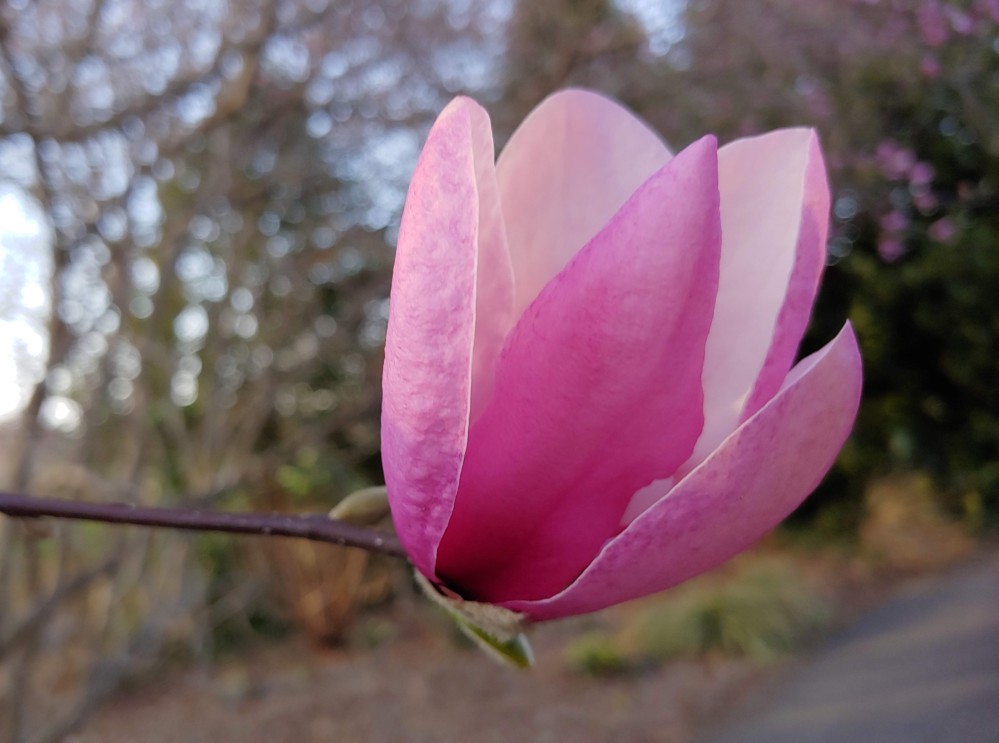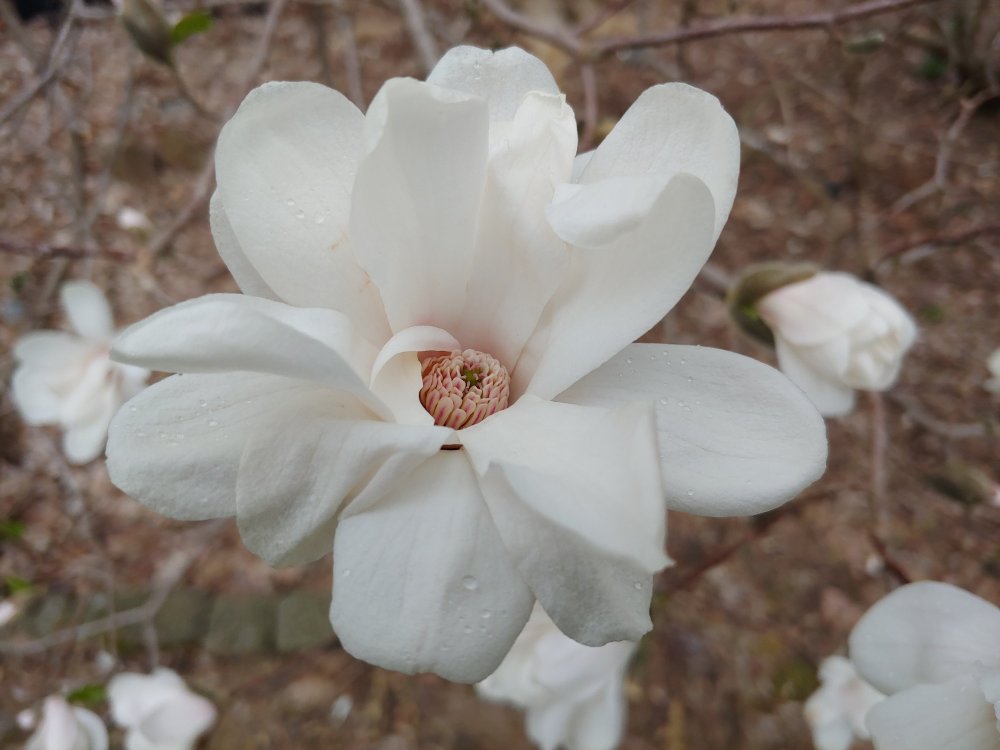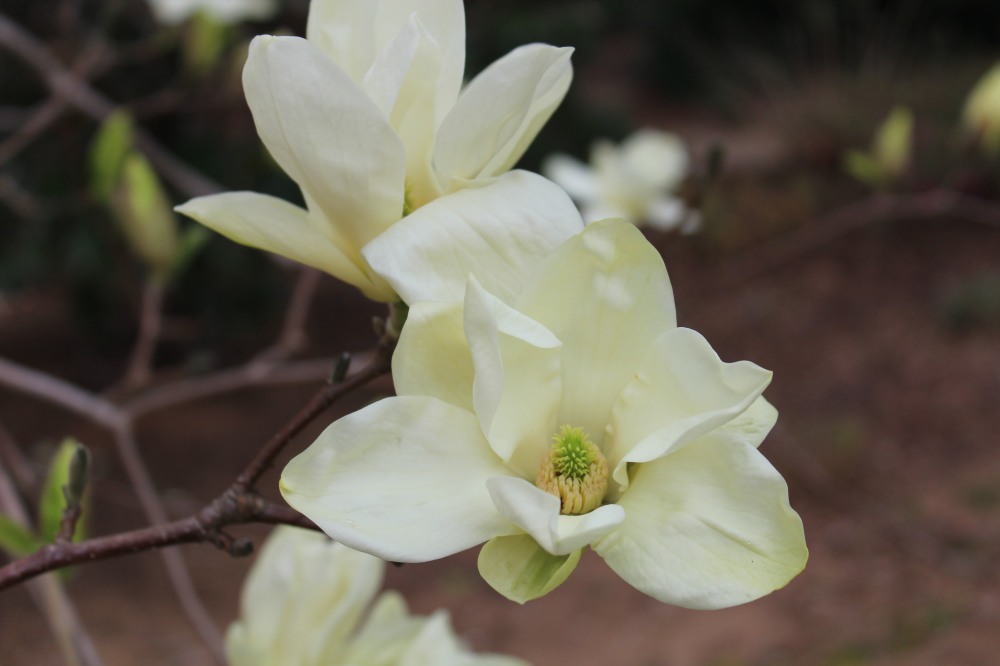The cheery, delicate blossoms of flowering cherries are everywhere. Visitors flock to area parks and gardens that feature the spring blooms, but a ride through any local neighborhood will display dozens, and even hundreds of the showy trees. The primary attraction is the white flowered ‘Yoshino’, though later in the blooming cycle these are joined by the double pink pompoms of ‘Kwanzan’.

Both are fine trees, as are other similar cherries, though many spread a bit too wide, and dense shade and shallow roots deny the possibility of lawn beneath mature trees. There are two cherries in this garden, the early flowering and more compact growing ‘Okame’ and a pink flowered cherry with pendulous branching that has been battered and bruised by neighboring trees that toppled over in storms to break large sections from this sad tree.

But, no matter that cherries are in high demand, in early spring I imagine planting more magnolias, glorious on every early spring day, though more would entail removing dogwoods, redbuds, and Japanese maples (and cherries), each with its own moment of glory.

Admittedly, there are numerous plants that I cannot live without, but I am greatly disappointed that more of the spring flowering (deciduous) magnolias can not be fit into the garden. There is space enough if I ignored my wife’s dictate that no more lawn be removed, but I’ve just enough good sense to understand which lines should not be crossed.

There are seven magnolias in the garden, two evergreens (Magnolia grandiflora), the treasured Bigleaf magnolia (Magnolia macrophylla, more on this in a few weeks), and four spring bloomers. Another five would be a start, and there are many marvelous choices, though I do not regret any that have been planted. Besides the Bigleaf magnolia, others are commonly found in gardens, and certainly there is a bit of hair splitting for dozens of others with variations in size and flower color.

These are times when I wish I would have bought that house with fifteen acres,. Five would be allotted to magnolias (with appropriate under plantings, of course), at least an acre apiece would be dedicated to dogwoods and redbuds, and five acres or more for Japanese maples. This would, of course, do considerable damage to my retirement savings, but I’d be happy in my poverty.
I wish I had the sun for magnolias.
Any variegated magnolias?
As with many trees in this garden, the magnolias are crammed in against the forest so that there are flowers on the outer edge, but none on the other. I am limited on what I plant since I have no patience, so I must start with large trees. The only large trees available, magnolias or otherwise, are common varieties (and none variegated). I play around with a few tiny trees planted in pots on the patios, but these are only a few and I never expect these will grow large enough to be planted in the ground.
I have one acre outside of Minneapolis, with only one magnolia and a foot of snow coming our way this week, and your post is a balm for Minnesota-loving but winter weary eyes. Thank you!!
Too often, magnolias flower beginning early March, and within a day or two the flowers are damaged by freezes that are common until April. Cooler temperatures in late winter this year pushed blooms a few weeks later, so flowers of magnolias will go from start to finish without damage. My wife insists it’s too cold here. Of course, you would say otherwise.
Beautiful pictures!
There are a few cultivars of flowering cherry at work. We lack th common Yoshino or Akebono, which is my favorite; but there are two large Kwanzan. I do not know what the few others are. One had double white flowers! I featured them in Six on Saturday last year because I was able to get pictures of six different cultivars in the same week. This year, they are blooming at different times. Some are mostly finished, while Kwanzan is only beginning to show color.
We grew more cultivars than most have heard of at the farm in the late 1990s. Most were discontinued because there was not much market for them. Unfortunately, we were not at all set up for growing them well at the time.